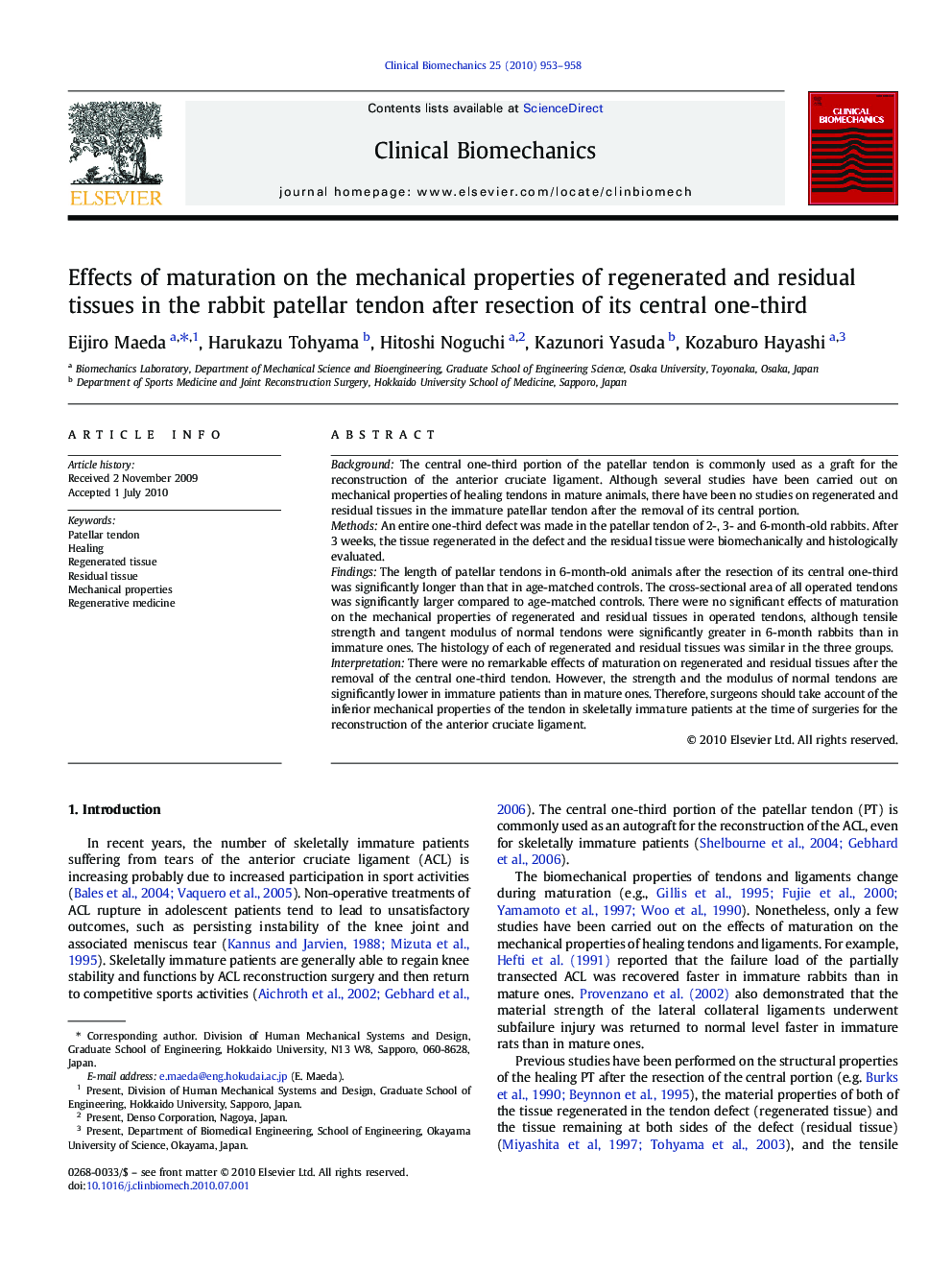| Article ID | Journal | Published Year | Pages | File Type |
|---|---|---|---|---|
| 4050994 | Clinical Biomechanics | 2010 | 6 Pages |
BackgroundThe central one-third portion of the patellar tendon is commonly used as a graft for the reconstruction of the anterior cruciate ligament. Although several studies have been carried out on mechanical properties of healing tendons in mature animals, there have been no studies on regenerated and residual tissues in the immature patellar tendon after the removal of its central portion.MethodsAn entire one-third defect was made in the patellar tendon of 2-, 3- and 6-month-old rabbits. After 3 weeks, the tissue regenerated in the defect and the residual tissue were biomechanically and histologically evaluated.FindingsThe length of patellar tendons in 6-month-old animals after the resection of its central one-third was significantly longer than that in age-matched controls. The cross-sectional area of all operated tendons was significantly larger compared to age-matched controls. There were no significant effects of maturation on the mechanical properties of regenerated and residual tissues in operated tendons, although tensile strength and tangent modulus of normal tendons were significantly greater in 6-month rabbits than in immature ones. The histology of each of regenerated and residual tissues was similar in the three groups.InterpretationThere were no remarkable effects of maturation on regenerated and residual tissues after the removal of the central one-third tendon. However, the strength and the modulus of normal tendons are significantly lower in immature patients than in mature ones. Therefore, surgeons should take account of the inferior mechanical properties of the tendon in skeletally immature patients at the time of surgeries for the reconstruction of the anterior cruciate ligament.
